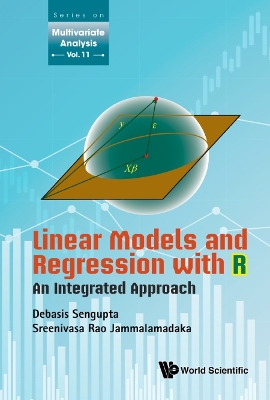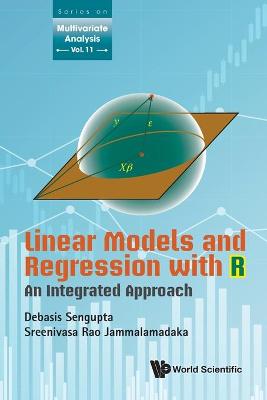Series on Multivariate Analysis
4 primary works • 6 total works
Book 0
Statistical Methods For Directional Data
by S Rao Jammalamadaka, Ashis SenGupta, and Riccardo Gatto
Published 30 April 2023
This is a thoroughly revised and updated edition of the earlier research monograph Topics in Circular Statistics by the first two authors. While maintaining the spirit as a research monograph, this book now covers the broader theme of directional statistics. Starting with an introduction to the area for those who wish to learn about this novel field, it goes on to survey the recent advances and developments in terms of theory, methodology, and applications. The book will be equally handy for the scientists in various application areas where methods based on directional data are being recognized as crucial and critical tools. As this novel area gets recognized as an important topic within statistics, this book can also serve as an essential resource for students to learn from.
Book 5
This research monograph on circular data analysis covers some recent advances in the field, besides providing a brief introduction to, and a review of, existing methods and models. The primary focus is on recent research into topics such as change-point problems, predictive distributions, circular correlation and regression, etc. An important feature of this work is the S-plus subroutines provided for analyzing actual data sets. Coupled with the discussion of new theoretical research, the book should benefit both the researcher and the practitioner.
Book 6
Linear Models: An Integrated Approach
by Debasis Sengupta and S Rao Jammalamadaka
Published 1 January 2003
Linear Models: An Integrated Approach aims to provide a clear and deep understanding of the general linear model using simple statistical ideas. Elegant geometric arguments are also invoked as needed and a review of vector spaces and matrices is provided to make the treatment self-contained. Complex, matrix-algebraic methods, such as those used in the rank-deficient case, are replaced by statistical proofs that are more transparent and that show the parallels with the simple linear model.This book has the following special features:
Book 11
Linear Models And Regression With R: An Integrated Approach
by S Rao Jammalamadaka and Debasis Sengupta
Published 8 August 2019
Starting with the basic linear model where the design and covariance matrices are of full rank, this book demonstrates how the same statistical ideas can be used to explore the more general linear model with rank-deficient design and/or covariance matrices. The unified treatment presented here provides a clearer understanding of the general linear model from a statistical perspective, thus avoiding the complex matrix-algebraic arguments that are often used in the rank-deficient case. Elegant geometric arguments are used as needed.The book has a very broad coverage, from illustrative practical examples in Regression and Analysis of Variance alongside their implementation using R, to providing comprehensive theory of the general linear model with 181 worked-out examples, 227 exercises with solutions, 152 exercises without solutions (so that they may be used as assignments in a course), and 320 up-to-date references.This completely updated and new edition of Linear Models: An Integrated Approach includes the following features:
Book 11
Linear Models And Regression With R: An Integrated Approach
by Debasis Sengupta and Sreenivasa Rao Jammalamadaka
Published 8 August 2019
Starting with the basic linear model where the design and covariance matrices are of full rank, this book demonstrates how the same statistical ideas can be used to explore the more general linear model with rank-deficient design and/or covariance matrices. The unified treatment presented here provides a clearer understanding of the general linear model from a statistical perspective, thus avoiding the complex matrix-algebraic arguments that are often used in the rank-deficient case. Elegant geometric arguments are used as needed.The book has a very broad coverage, from illustrative practical examples in Regression and Analysis of Variance alongside their implementation using R, to providing comprehensive theory of the general linear model with 181 worked-out examples, 227 exercises with solutions, 152 exercises without solutions (so that they may be used as assignments in a course), and 320 up-to-date references.This completely updated and new edition of Linear Models: An Integrated Approach includes the following features:
Topics in Circular Statistics. Series on Multivariate Analysis, Volume 5.
by S Rao Jammalamadaka and A Sengupta
Published 1 January 2001



